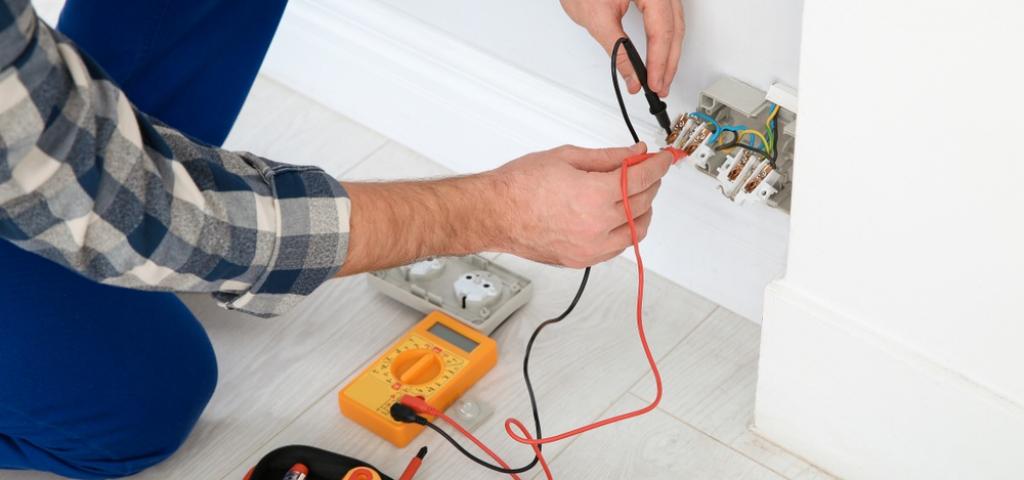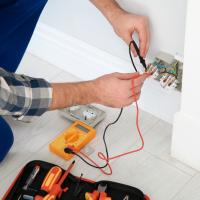Homeowners often don't think about their home's electrical system until there's a problem. We all know that regularly scheduled maintenance is important for our homes. But when it comes to electrical maintenance, many people don't know where to start.
In this post, we'll talk about why regular electrical maintenance is so important, safety precautions, and how you can do it yourself.
Why Is Regular Electrical Maintenance Important?
In any home, office, or other building, the electrical system is one of the most important parts. It provides power for lights and appliances, but it also helps to regulate temperature and keep the structure safe.
Regular electrical maintenance is essential to ensure that your home or business runs smoothly and efficiently. There are several different reasons why regular maintenance is so important. It can help identify potential issues before they cause serious damage or lead to a breakdown.
By catching these problems early on and addressing them quickly, you can reduce the risk of power outages and other serious issues.
Furthermore, regular maintenance can help prevent electrical fires by identifying wiring issues or other problems with your electrical system. Thus, ensuring that this maintenance is done regularly should be a top priority for any homeowner or a business owner.
How Often Should an Inspection Be Done?
It depends on the age of the house and the last time an inspection was done. For a new home, an inspection should be done every two years. For an older home, it's best to have an inspection every year.
If you're not sure when the last inspection was done or if you think there may be a problem with the electrical system, it's always better to err on caution and have an inspection done as soon as possible.
A qualified electrician will be able to identify any problems with the electrical system and make recommendations for repairs or upgrades. They will also be able to answer any questions you may have about your electrical system and how to keep it running smoothly.
Tools To Use:
For a basic electrical inspection of your home, you'll need a few basic tools:
- Screwdriver
- Voltage tester
- Flashlight
If you're looking for a more comprehensive safety inspection, you may want to bring in a professional electrician.
Safety Precautions:
When dealing with electrical issues, it is important to always exercise caution and take all necessary safety precautions to get started. You should:
- Avoid any contact with the electrical wires or components themselves, as even small currents can cause serious injury.
- Always wear proper protective equipment, such as gloves, goggles, and insulated shoes.
- Never work on electrical systems near water sources or standing puddles of water, as these can act as a conductor and increase the risk of shock.
- Have a good understanding of how electricity works and how different types of systems may interact.
By following these simple safety precautions and clearly understanding electrical issues, you can stay safe while working with electrical components.
How To Inspect for Loose Wiring?
When checking for loose wires, it is important to understand the potential dangers involved. Loose wires can create fire hazards or expose people to dangerous currents, so it is crucial to check for any signs of damage and take immediate action if necessary. A few key steps can be taken when performing a DIY wire check at home.
The first step is to unplug any electronics from their power sources, such as lamps and appliances. Next, you should carefully inspect all visible wiring for signs of damage, such as frayed wires or broken connectors. If any damage is detected, it may be safer to consult a professional emergency electrician rather than attempting to make repairs on your own.
However, if no damage is found, there are still some preventive measures you can take to ensure the safety of your household electrical system.
For example, you can plug in an appliance and gently tug on the cord while listening for any unusual noises or sensations. It will help you detect any loose connections that could potentially lead to problems in the future. It is always recommended that you regularly change your bulky extension cords with newer ones with three-pronged connectors at each end.
How To Inspect for Damaged Outlets:
There are several ways to check for damaged outlets in your home. The first step is to ensure that all your electrical sockets are properly connected and all loose wires are tightened.
In addition, you should examine the safety covers over each of your outlets to ensure that they are secure and functional. If you notice any broken or frayed wires, these should be replaced immediately to prevent fires or other electrical accidents.
Another useful tip is to use a small mirror when inspecting an outlet from below, as this can help you see into cracks and crevices that might otherwise be inaccessible. By remaining alert for warning signs of damaged outlets and taking precautions to keep them in good repair, you can help protect yourself and your family from electrical hazards in your home.
How To Inspect for Overloaded Circuits:
The first step in checking for overloaded circuits is to locate the electrical panel in your home. This box will contain a series of switches that control the power to different parts of your house, and it's important to make sure that each one is turned on before proceeding further.
Once you have checked all of the switches, you can begin to assess potential problem areas by monitoring the lights in each room for flickering or dimming. If you notice this behavior in any area of your house, it may signify that too many appliances are connected to that circuit.
You should then take steps to unplug or turn off any devices on that line, such as lamps or electronics, and repeat the process until you no longer notice any dimming or flickering. If this does not resolve the issue, you should contact an emergency electrician for further assistance.
However, with a little care and attention, it is easy to stay on top of overloaded circuits and ensure their continued safety and efficiency.
How To Inspect for Tripped Breakers:
Breakers are an important part of your home's electrical system. They trip when there is an overload of electricity running through the wires, which can cause a fire.
Simply go to your breaker box and look at the switch to check if a breaker has been tripped. If the switch is in the "off" position, the breaker has tripped, and you will need to reset it.
Be sure to shut off all appliances and devices before resetting the breaker. Once the breaker is back in the "on" position, you can turn on your appliances and devices one at a time to see if they are working properly.
Final Lines:
Regular inspection of the home electrical system is important for maintaining a safe and functional household. It allows you to identify faulty wires, damaged outlets, and other issues potentially leading to dangerous situations or costly repairs. You should thoroughly check all outlets, switches, and circuit breaker panels for signs of wear or potential hazards. If you detect any issues during your inspection, contact a professional emergency electrician right away to prevent further complications. With proper maintenance and care, your home's electrical system will run smoothly for years to come.
FAQs:
How Often Should I Inspect My Home’s Electrical System?
It is generally recommended that you inspect your home's electrical system at least once a year. You may need to conduct more frequent inspections if you notice any warning signs of problems, such as flickering or dimming lights, or if you are planning any major renovations that will require electrical work.
What Should I Do if I Find a Problem With My Electrical System?
If you find any problems with your electrical system, such as damaged outlets or overloaded circuits, you should contact a professional emergency electrician right away. Do not attempt to repair the problem yourself, as this could be dangerous.
What Are Some Common Electrical Hazards in the Home?
Some common electrical hazards in the home include overloaded circuits, tripped breakers, and damaged outlets. These hazards can cause fires or electric shocks, so it is important to be aware of them and take steps to prevent them from occurring.
How Can I Prevent Electrical Hazards in My Home?
You can prevent electrical hazards in your home by regularly inspecting your electrical system and taking steps to minimize excessive use of electricity. It may include shutting off devices and appliances when they are not in use or unplugging unused devices.
Emergency Electricians
Emergency Electrician Near Me






